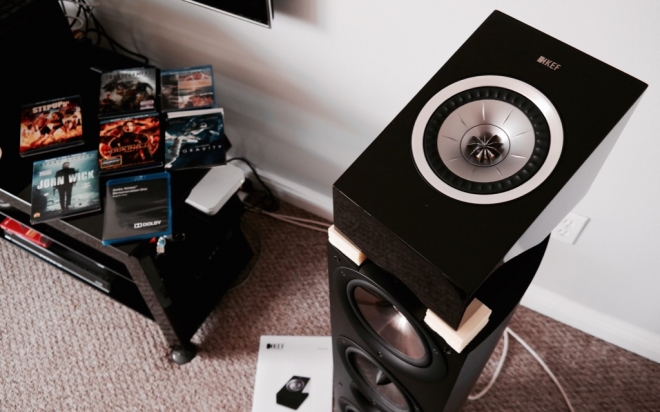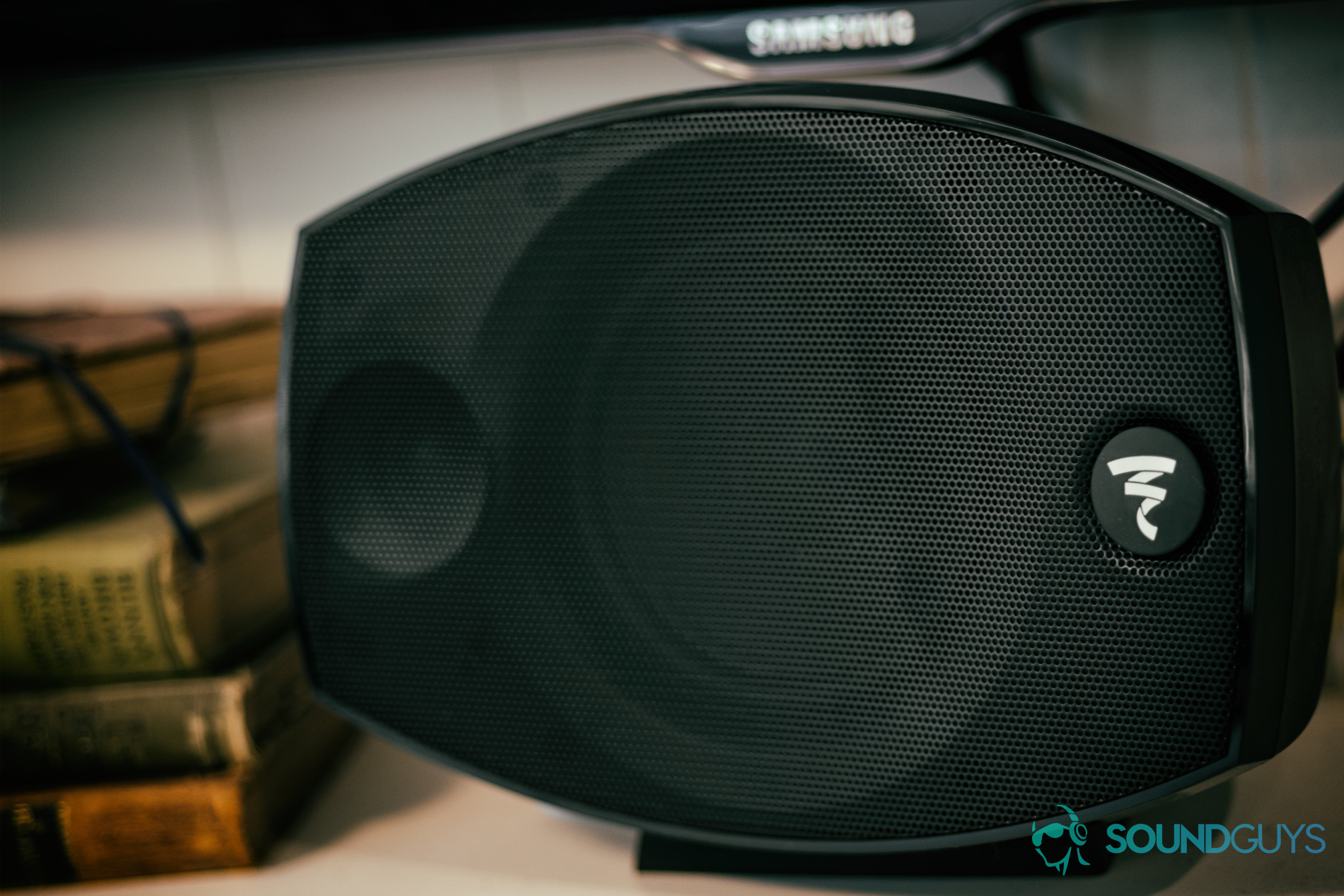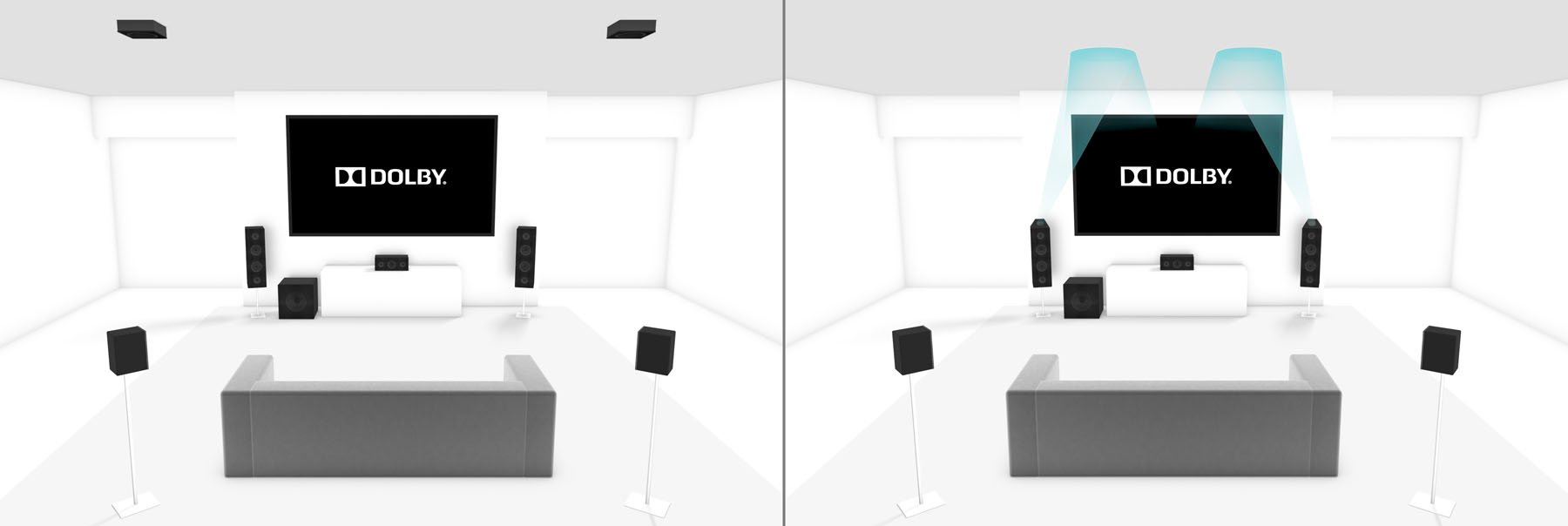Dolby 5.1.2 Speaker Placement
Posted By admin On 16/05/195.1 and 7.1 speaker placement for surround sound home theater For cinema and home theater, it’s a battle between ITU, THX and Dolby surround system standards. For home theater 5.1, Dolby and THX suggest placing your LS and RS speakers 90 to 110 degrees from center. Optimize your sound system that includes Dolby Atmos technology with this step-by-step guide to the best speaker setup. 5.1.2 Overhead Speakers The configurations noted in.
5.1.2 Atmos Speaker Placement
I have a pair of ceiling mountable speakers (Polk OWM3) and an Atmos ready receiver that I would like to make use of. Here is a “sketch” of my living room. I am wondering where is the best place to put 2 Atmos speakers for a 5.1.2 set up for my Main Two Seats. I put some green circles for a couple of different positions I had in mind.
The Atmos 5.1.2 guide shows the ceiling speakers being ahead of the couch in the overhead but in the side view as being slightly forward of the head. Is it more important to try and keep them centered from my main seating (“Main Two Seats” on my drawing) or matched with the L and R? Should I place them further from the main seating (hard to do on the right since there is a wall there)?
Edit: To eliminate some confusion, some more info: The only area I care about sound is the 'Main Two Seats' of the grey couch. 98% of the time it's just two of us watching. The L, R, C, SL, SR are already in place and are similar to what is in the picture that I have updated to more accurately reflect the room as it is now.
I'm really just looking for placement advice for one pair of ceiling speakers for Atmos for my main seating. In the diagram, I have place two pairs of circles (1 and 2) that demonstrate what I had read on placement but was unclear on.
Just a few short years ago, Dolby Atmos still seemed like the tech of the future. Sure, it had been in theaters for a while, but mainly only higher-end theaters, and while it was coming to the home theater, who really wanted to deal with all those speakers? Now things have changed and Atmos is everywhere. It’s tough to find even a low-end A/V receiver that doesn’t support Atmos (and its main competitor, DTS:X), and it’s even available in soundbars for those looking for a succinct option.

Still, we haven’t even begun to hit full adoption of Dolby Atmos, so you may be left wondering what it is, and what terms like 3D and object-based sound mean. How many speakers do you need? Do you need a new receiver? We’ve got that answers to that and a whole lot more.
There’s a lot of info to absorb here, so we’ve broken it all down below and will continue updating this article as things evolve.
Dolby Atmos in the theater: How is it different?
In theaters, Dolby Atmos significantly expands the speakers used, as well as the way surround sound is employed, opening up new possibilities for movie-makers to provide a more realistic, immersive sound experience. Until now, theaters have been able to reproduce a maximum of eight individual tracks of surround sound, spread out among varying numbers of speakers.
For example: With the 7.1-channel surround sound still used in most theaters, you get three channels up front (left, right, and center) two side surround channels (left and right), two rear channels (left and right), and one subwoofer channel. When designing a film’s soundtrack, directors are guided by these different channels to steer sound effects around the room. But no matter how many speakers get placed in a certain area — say, the left side of the room for the left surround channel — all of those speakers were restricted to one channel of sound, so they all played the same sound at the same time.
By contrast, Dolby Atmos is capable of processing up to 128 channels of sound, which can be routed to up to 64 individual speakers. This way, sound engineers can essentially leave the channels behind, instead placing “sound objects” in pinpointed locations and moving them throughout the theater. With Atmos, the ceiling can also be lined with any number of full-range speakers that work in concert with all of the other speakers in the room so these objects can be placed just about anywhere within a virtual hemisphere. In a way, you can chase the sound with your ears, tracking it and correlating it to the on-screen action. For example, if it rains in the movie, the rain comes from directly above you. If a helicopter flies overhead and to the right, the sound will start in the back of the room, move overhead, and disappear off to the right side.
Of course, for the home theater, Atmos is scaled down considerably.
How does Atmos work in home theaters?

We’ve got some good news: If you already have a surround sound setup, you probably won’t have to replace all or even most of your home theater components to enjoy Dolby Atmos at home. Existing Blu-ray players are able to deliver Dolby Atmos sound information from new Atmos-infused Blu-ray discs, and most of your existing speakers can remain as the foundation of your surround system. You may, however, need to replace your A/V receiver (unless you own a model that can add Atmos support via a firmware update), and you will need to add some speakers to the room or, in some cases, re-purpose existing speakers. You may also need to upgrade your streaming device of choice if you’re looking to stream movies in Dolby Atmos.
Dolby Atmos A/V receivers
Pioneer, Onkyo, Integra, Denon, Marantz, and Yamaha were the first manufacturers to announce models featuring Dolby Atmos, but now the feature is so common that every single receiver on our list of the best A/V receivers you can buy features the technology, even the cheapest ones. Generally many receivers that support at least 7.2 channels offer Atmos support, even those that go for less than $300. There are exceptions, of course, but the point is that you can get your hands on an Atmos-compatible receiver without breaking the bank.
Atmos-enabled receivers will have the processing capabilities to handle Atmos-encoded Blu-ray discs and streaming content, along with the other leading technology in object-based sound, DTS:X, and often others like Auro 3D, as well. They’ll also pack the amplifier assignment needed to accommodate Atmos-specific speakers as well. Additionally, Atmos speaker channels will get discrete sound information — sounds won’t simply be “derived” from other channels as is the case with Dolby’s Pro-Logic IIz surround processing.
Dolby Atmos soundbars
Maybe you want the immersion that Dolby Atmos brings, but you either don’t have the space or just don’t want a full home theater audio setup. Atmos-enabled soundbars debuted in 2015, and companies like Sony, Samsung, LG, and more offer them, and LG even offers Atmos-compatible soundbars with its impressive OLED TVs. How they work can differ from soundbar to soundbar, and different models can be more or less immersive, but all of them include upward-firing drivers similar to those used in many standard Dolby Atmos speaker configurations. If you want to know more, we have a separate guide featuring all the information you could want on Dolby Atmos soundbars.
Streaming boxes and game consoles
Unlike Blu-ray players, streaming boxes need to specifically support Dolby Atmos. For the time being, not many streaming services offer Dolby Atmos movies or TV shows, and only a relatively small number of streaming devices support Atmos. The Roku Ultra and Roku Premiere — both of which also support 4K video and HDR (high dynamic range) — support Atmos playback, as does the latest-generation Amazon Fire TV. Apple has said it will bring Dolby Atmos to the Apple TV 4K via a firmware update, but there has been no indication of when this could happen.
When it comes to game consoles, the situation is a little murkier. The PlayStation 4 supports bitstream audio output, so it should support Dolby Atmos-enabled Blu-rays, while the Xbox One S and Xbox One X feature UHD drives and have received an Atmos update, supported on both Blu-ray and 4K UHD Blu-ray (though Microsoft has admitted there are some hiccups there at present). When it comes to games, however, the PS4 line — including the PlayStation 4 Pro — does not support Atmos, which first came to games with the release of Star Wars Battlefront. The entire Xbox One lineup, including the Xbox One, Xbox One S, and Xbox One X does support Atmos gaming, as do Windows 10 PCs.
Atmos speaker configurations
As mentioned above, Atmos in commercial theaters expands the capabilities of the side and rear surround speakers significantly, but in the home theater environment, the front left, right, center, side surrounds and rear surrounds are treated the same. For now, the additional sounds will be coming from above.
There are a number of ways to get Atmos height channels into your living room. Many supported (and we’d argue, preferred) configurations see speakers added to the ceiling. But for those scenarios where ceiling speaker placement is not possible, there are a number of options.
For basic 5.1.2 Atmos (the “.2” representing front left and right height channels) there are a couple of ways to go. One way is to get a pair of “Atmos-enabled” front left and right speakers or surround speakers, like those used in the Pioneer Elite Dolby Atmos speakers, or the more nimble Sib Evo from Focal, both of which fire sound at the ceiling at an angle, bouncing it back down to the listening position. Another way is to set a pair of speakers called “Atmos Modules” on top of the front left and right speakers and/or surround speakers, like Klipsch’s R-26FA and R-14SA. In either case, these speakers will aim discreet sounds up at the ceiling to be reflected down toward the listener, thus simulating a ceiling-placed speaker.
In either case, the idea is to add real overhead sound sources, expanding the enveloping effect folks look for in a surround environment.

With these new configurations comes a new numbering scheme. No longer do we just have 5.1, 7.1, and 9.1. Now there’s 5.1.2, 5.1.4, 7.1.2, etc. Here’s a run-down of the various formats:
| Dolby Atmos with a 7 Channel Receiver | Configuration Options |
| 5.1.2 Configuration | 5.1 layout with one pair in-ceiling height speakers (front) |
| 5.1.2 Configuration | 5.1 layout including Dolby Atmos-enabled front speakers or add-on speaker modules |
| Dolby Atmos with a 9 Channel Receiver | Configuration Options |
| 5.1.4 Configuration | 5.1 layout with two pair in-ceiling height speakers (front and surround) |
| 5.1.4 Configuration | 5.1 layout including Dolby Atmos-enabled front and surround speakers or add-on speaker modules |
| 7.1.2 Configuration | 7.1 layout with one pair in-ceiling height speakers (front) |
| 7.1.2 Configuration | 7.1 layout including Dolby Atmos-enabled front speakers or add-on speaker modules |
| Dolby Atmos with an 11 Channel Receiver | Configuration Options |
| 7.1.4 Configuration | 7.1 layout with two pair in-ceiling height speakers (front and surround) |
| 7.1.4 Configuration | 7.1 layout including Dolby Atmos-enabled front and surround speakers or add-on speaker modules |
| 9.1.2 Configuration | 9.1 layout with one pair in-ceiling height speakers |
| 9.1.2 Configuration | 9.1 layout including Dolby Atmos-enabled front speakers |
Watching Dolby Atmos movies at home
Dolby Atmos officially arrived on Blu-ray in 2014 with the release of Transformers: Age of Extinction. Since then, the format has been supported on more than 100 releases and counting, both in standard Blu-ray and Ultra HD Blu-ray formats. The rate of release was initially slow, but as more home theater enthusiasts are buying Atmos-compatible A/V receivers and soundbars, it’s becoming more and more common, again, along with DTS:X. For example, Star Wars: The Last Jedi is Disney’s first Dolby Atmos-compatible release.
When it comes to streaming, your options are currently limited. Netflix added support for Dolby Atmos in 2017, but only a handful of titles are actually available in the format, and the supported hardware is limited to LG OLED TVs, Xbox One consoles, and Windows 10 PCs. Vudu has supported Atmos since 2015, and now offers more than 30 titles in the format. Vudu is also less restrictive than Netflix, supporting Atmos on any streaming device that is compatible with the format.
Is Dolby Atmos worth the upgrade?
It’s still (relatively) early days for Dolby Atmos in the home, despite how quickly the technology has taken off. With that said, it absolutely adds an extra level of immersion to your viewing experience, even if it may not be quite as impressive as Atmos can be in theaters. Anything that adds to the “you are there” effect is a win in our book. So as long as you don’t find it prohibitively expensive, we say go for it.